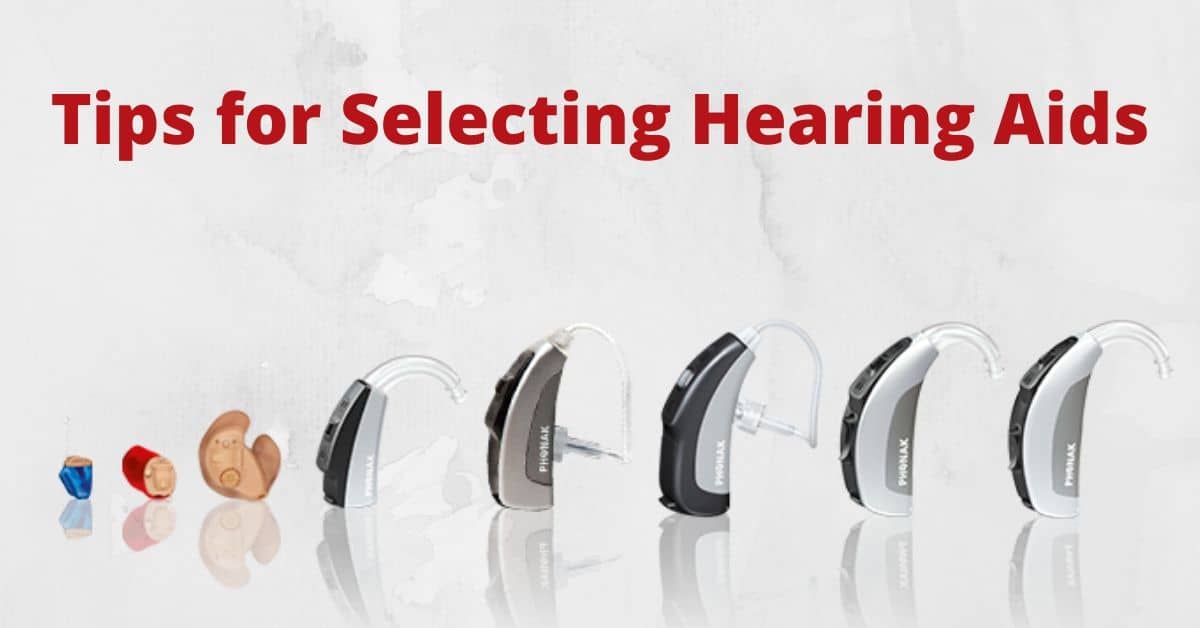
If you’re noticing hearing loss and you’re ready to improve your life with a pair of hearing aids, congratulations! You’re making a great investment in your long-term health and well-being. But what’s the next step? Here are a few tips for moving forward with the process of getting hearing aids and making the best decisions for your situation.
Bring a Friend
There is a lot of information to absorb about the hearing aids that are on the market today and the features that are right for you. Bring someone with you when you talk to our team about the options available. Two people can remember more than one person, and when you’re processing the information you’ve been given it will be easier and more productive to do so with someone who’s starting out from the same place.
Pick a Trustworthy Provider
Whoever you choose to trust with your hearing healthcare, the relationship you have with them will be ongoing. Beyond getting the hearing test and a set of hearing aids, you’ll need to return to your provider for fitment adjustments and repairs. You may need to visit the office somewhat frequently in the first few weeks after receiving your hearing aids, so you want to make sure to select a reliable and friendly provider.
Both audiologists and hearing instrument specialists are licensed to sell hearing aids, but only audiologists have masters or doctoral degrees in the field. Ask your general practitioner for a referral, or contact the American Academy of Audiology or the American Speech-Language-Hearing Association for information on providers in your area.
Consider Your Needs
Hearing aids are available to meet a variety of individual needs. Your chosen provider will ask you questions about your lifestyle to determine which type is best for you, so it’s good to come prepared to answer them. Do you lead a more active lifestyle or do you spend a lot of time reading? Do you need your hearing aids more for television or for social get-togethers? Consider what you hope to get out of your hearing aids so you can help your team direct you to the hearing aids best for your lifestyle.
Consider Supplementary Technology
Hearing aids today are compatible with a lot of “add-ons,” like directional microphones, Bluetooth capability, and telecoils. These additional features are great for some people, but less important for others. Keep in mind that you can always purchase them later, too, if you decide they’re important. But if you don’t speak on the phone a lot you might not need the telecoil, and if you don’t go out a lot and prefer to have people over to your place, you might be able to do without the directional microphone. Get a little familiar with these technologies before you meet with your provider so you have some idea of what might be useful to you, and if you’re feeling pressured into buying more than you want, perhaps consult a different audiologist before making a decision.
Get Everything in Writing
Most hearing aid manufacturers allow a 30-to-60-day trial period with follow up visits for their hearing aids. Make sure your provider gives you a signed and dated contract that outlines all fees, trial periods, specific make and model of hearing aids, and warranty information. Hearing aids, being a significant investment, should always come with documentation that gives you recourse in the event of malfunction or dissatisfaction.
Take Advantage of Training
It’s true that we hear with our brains as much as our ears, and hearing aids come with an adjustment period. How long it takes you to get used to your new hearing aids depends in part on how long you’ve needed them but gone without: habits form and the brain changes in the face of hearing loss, and when your hearing ability returns it will take some getting used to. If your hearing healthcare provider offers training in adjustment, you’d be well-advised to take advantage of it so you can get the most out of your new hearing aids.
